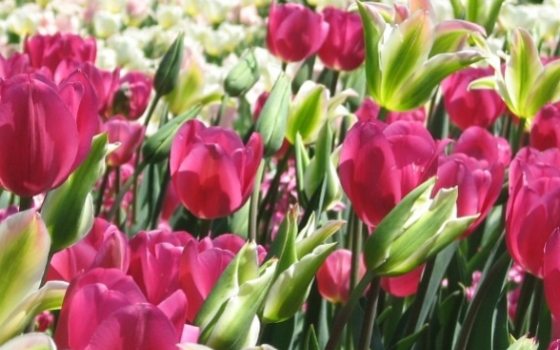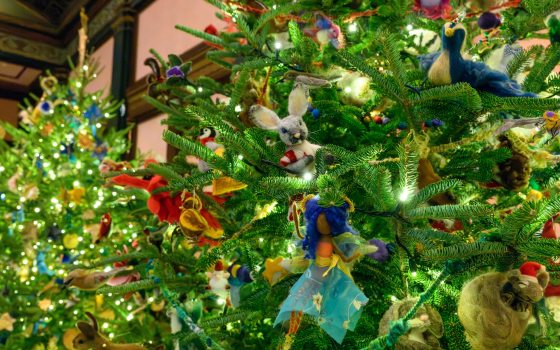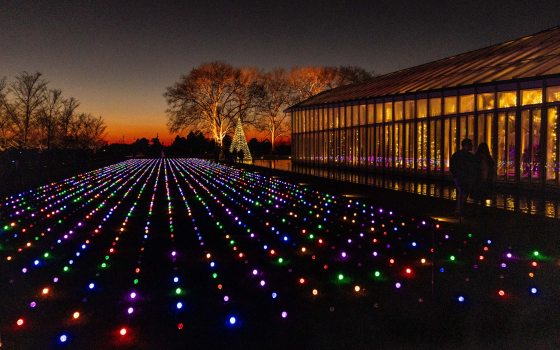When I was asked to write this blog in late March, I silently wondered if spring was ever going to arrive. It was cold. It was rainy. The bulbs were barely poking their leaves out of the ground. Spring finally did arrive, even if a little late. On the bright side, this year ended up being a spectacular season for our magnolias. Since spring was so late, these delicate magnolia flowers were not hit with a frost after opening and the beautiful blooms continue to shine on some trees throughout the Gardens.
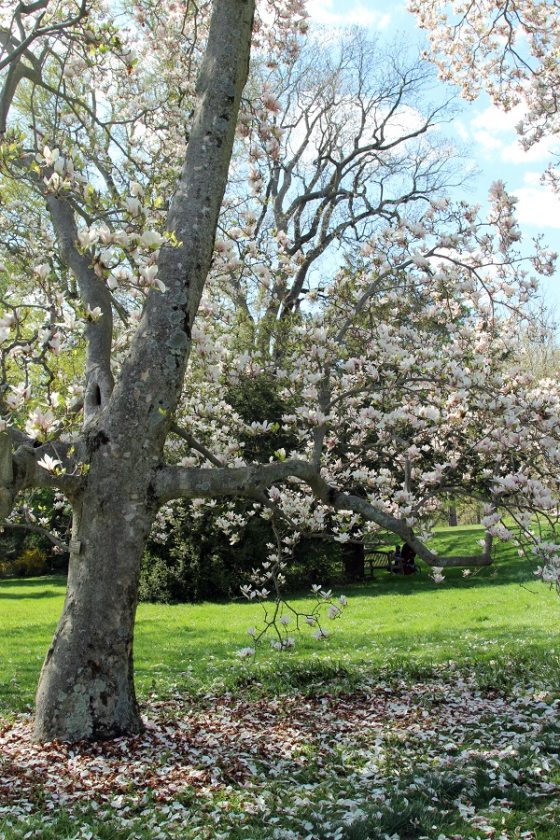
After a long winter, we’re finally seeing the spectacular colors of tulips throughout the Gardens. With color blocked borders of approximately 100,000 tulips every year, the display on the Flower Garden Walk is always an anticipated sight.
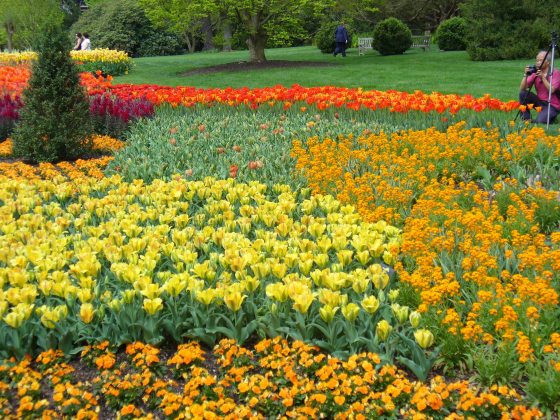
A field of red, orange, and yellow flowers.
Last spring we tried something new on our Flower Garden Walk—we planted a series of mixes that meandered down the Walk in sweeps of color. For example, in one section of the Flower Garden Walk we planted several shades of blue and purple bulbs mixed in with tulips and annuals that matched the particular colors in the border.
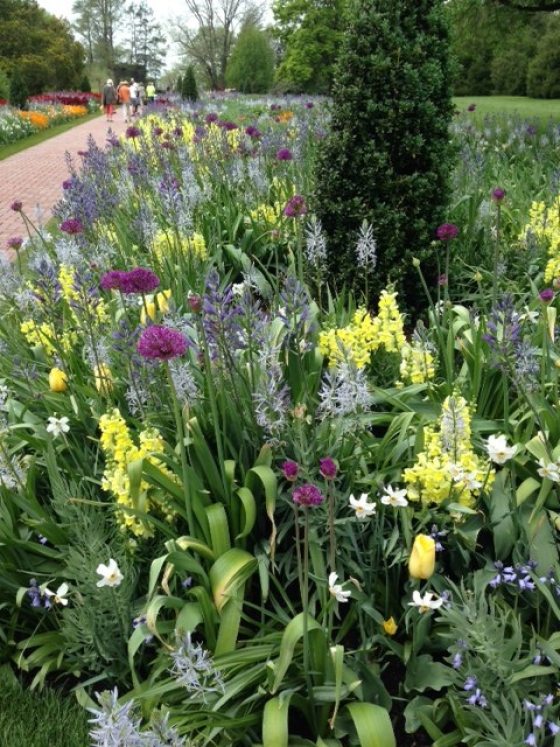
There are many reasons we like these new mixes. For starters, we can introduce our guests to a variety of spring flowering bulbs they may not be aware of, such as Alliums (ornamental onions), Fritillaria, and the native Camassia (quamash). In various combinations, these lesser-known bulbs can go a long way in jazzing up a spring display. These bulbs add so many different textures and varying heights to the beds, and they bloom a little later in the season, too. This allows us to extend our bloom time and have a great deal of color through Mother’s Day weekend. We were so impressed with the results last year that we are following the mixed design again this year. Another great thing about these other bulbs is that they are deer resistant. Where the deer population will dig up and eat every tulip, they pass these spring bulbs right by.
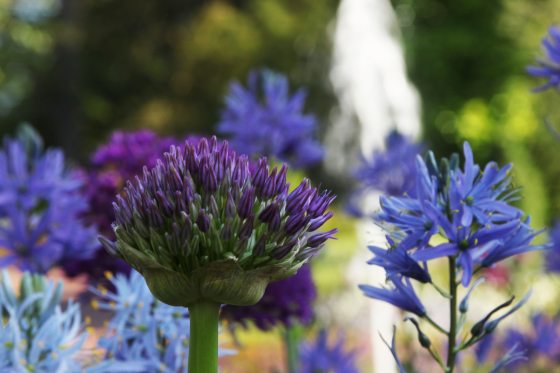
Mixing tulips with other spring bulbs not only enhances the aesthetics components of our displays, but it also helps to keep our planting beds and tulips healthier. Tulips are susceptible to a vicious fungal disease called Botrytis blight or Tulip Fire (Botrytis tulipae). The blight usually infects the tulips as they emerge, covering the leaves in brown spots while twisting and distorting the plant. Because we have essentially planted a monoculture of tulips, year after year, our planting beds are at risk of developing the disease.
Botrytis blight is worse during a cool, rainy spring like we are having this year. Botrytis blight is also host specific, which means it affects tulips the most, and lasts in the soil for roughly three years. To control the spread of the fungus we remove any infected bulbs. We have planted known trouble spots in the border with the new bulb mixes to give the fungus in the soil a chance to burn itself out.
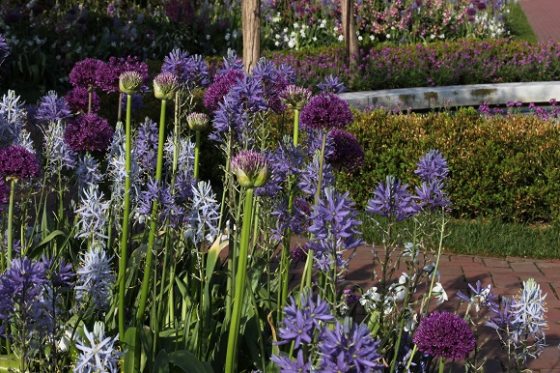
A lovely bunch of purple flowers.
These plant mixes allow our spring display to be both elegant and functional.
While on the topic of elegant and functional, I wanted to reveal a little trick we are using on the Flower Garden Drive where we have planted 2,000 Narcissus ‘Bridal Crown’ and 2,000 Narcissus ‘Cheerfulness’. Why plant two different types of daffodils, you may wonder?
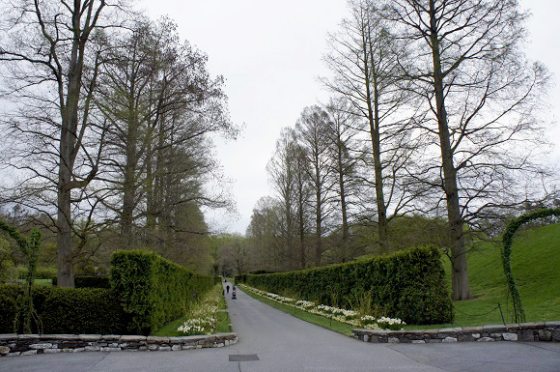
The Drive is a challenge to plant at any time of the year, but especially during spring. The north side (the side on the left) gets a lot more sun than the south side. If we plant bulbs down the Drive, the north side opens first and then the south side opens a couple of weeks later, giving a lopsided look. Our Head Gardener, Ed Broadbent, solved this problem last year.
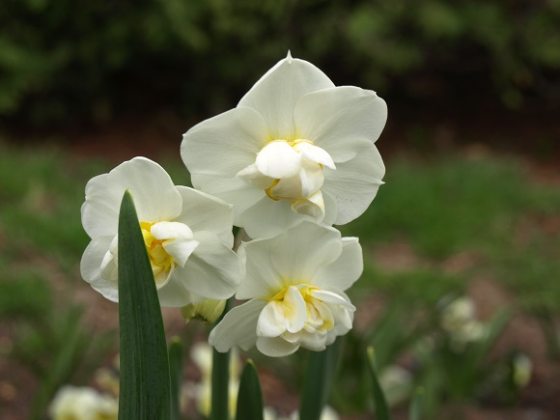
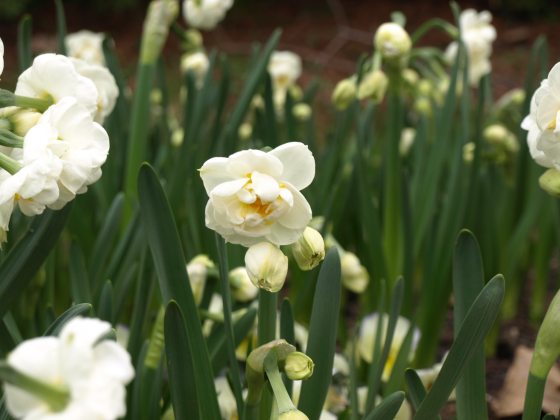
Ed found the perfect duo for the Drive. We planted the early flowering daffodil, Narcissus 'Bridal Crown' on the south side (shady side) and the late flowering daffodil, Narcissus 'Cheerfulness' on the north side (sunny side). As you can see in the picture, they flowered at the same time and because they look so much alike, you’d think they were the same cultivar.
I hope you find inspiration from these sweet little daffodils, and the variety of bulbs you'll find in the mix on our Flower Garden Walk (and our Idea Garden too!). With a little planning, you can have spring blooms in your home garden for months.
